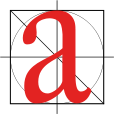- Widows and orphans
-
 A widowed line: the last line of a paragraph, all alone on the other side of a page break.
A widowed line: the last line of a paragraph, all alone on the other side of a page break.
At the end of the first paragraph, the word 'lorem' is an orphan in the second sense: a very short final line that, because the rest of its line is white, creates an impression of two lines of whitespace between the paragraphs.In typesetting, widows and orphans are words or short lines at the beginning or end of a paragraph, which are left dangling at the top or bottom of a column, separated from the rest of the paragraph. There is some disagreement about the definitions of widow and orphan; what one source calls a widow the other calls an orphan.[1][2] The Chicago Manual of Style uses these definitions:[2]
Widow
- A paragraph-ending line that falls at the beginning of the following page/column, thus separated from the rest of the text.
Orphan
- A paragraph-opening line that appears by itself at the bottom of a page/column.
- A word, part of a word, or very short line that appears by itself at the end of a paragraph. Orphans result in too much white space between paragraphs or at the bottom of a page.
Remembering the terms
A common mnemonic is "An orphan has no past; a widow has no future"[3] or "An orphan is left behind, whereas a widow must go on alone".
Another way is to think of orphans as generally being younger than widows; thus, orphaned lines happen first, at the start of paragraphs (affecting and stranding the first line), and widowed lines happen last, at the end of paragraphs (affecting and stranding the last line). Orphaned lines appear at the "birth" (start) of paragraphs; widowed lines appear at the "death" (end) of paragraphs.
Guidelines
Writing guides, such as the Chicago Manual of Style, generally suggest that a manuscript should have no widows and orphans even when avoiding them results in additional space at the bottom of a page or column.[4] However, in its 16th edition (2011) the Chicago Manual of Style suggests a new convention in which pages may end with the first line of a new paragraph.[5] Some techniques for eliminating widows include:
- Forcing a page break early, producing a shorter page;
- Adjusting the leading, the space between lines of text (although such carding or feathering is usually frowned upon);
- Adjusting the spacing between words to produce 'tighter' or 'looser' paragraphs;
- Adjusting the hyphenation of words within the paragraph;
- Adjusting the page's margins;
- Subtle scaling of the page, though too much non-uniform scaling can visibly distort the letters;
- Rewriting a portion of the paragraph;
- Reduce the tracking of the words;
- Adding a pull quote to the text (more common for magazines); and
- Adding a figure to the text, or resizing an existing figure.
An orphan is cured more easily, by inserting a blank line or forcing a page break to push the orphan line onto the next page to be with the rest of its paragraph. Such a cure may have to be undone if editing the text repositions the automatic page/column break.
Similarly, a single orphaned word at the end of a paragraph can be cured by forcing one or more words from the preceding line into the orphan's line. In web-publishing, this is typically accomplished by concatenating the words in question with a non-breaking space and, if available, by utilizing the orphans: and widows: attributes in Cascading Style Sheets. Sometimes it can also be useful to add non-breaking spaces to the first two (or few) short words of a paragraph to avoid that a single orphaned word is placed to the left or right of a picture or table, while the remainder of the text (with longer words) would only appear after the table.
Most full-featured word processors and page layout applications include a paragraph setting (or option) to automatically prevent widows and orphans. When the option is turned on, an orphan is forced to the top of the next page or column; and the line preceding a widow is forced to the next page or column with the last line.
References
- ^ [[Rob Carter|Carter, Rob]A widowed line, highlighted in yellow. ]. Day, Ben. Meggs, Philip. Typographic Design: Form and Communication 2nd ed. John Wiley & Sons: 1993. p. 263
- ^ a b "Chicago Manual of Style"
- ^ Bringhurst, Robert. The Elements of Typographic Style. 3rd ed. Hartley and Marks Publishers: 2004. pp. 43-44 ISBN 0881792063
- ^ Chicago Manual of Style, 3.11 Overall appearance: "A page should not begin with the last line of a paragraph unless it is full measure and should not end with the first line of a new paragraph."
- ^ Chicago Manual of Style, 16th Edition, 2.113: "A page should not begin with the last line of a paragraph unless it is full measure. (A page can, however, end with the first line of a new paragraph.)"
Typography terminology Page 
Paragraph Character Typeface anatomyCounter · Diacritics · Dingbat · Glyph · Initial · Kerning · Letter-spacing · Ligature · Subscript and superscript · Swash · Text figuresCapitalizationVertical aspectsClassifications Punctuation Typesetting Calligraphy · ETAOIN SHRDLU · Font (Computer font) · Font catalog · Letterpress · Lorem ipsum · Movable type · Pangram · Phototypesetting · Punchcutting · Type design · Typeface · Type foundry · MicrotypographyTypographic units Digital typography Categories:
Wikimedia Foundation. 2010.
